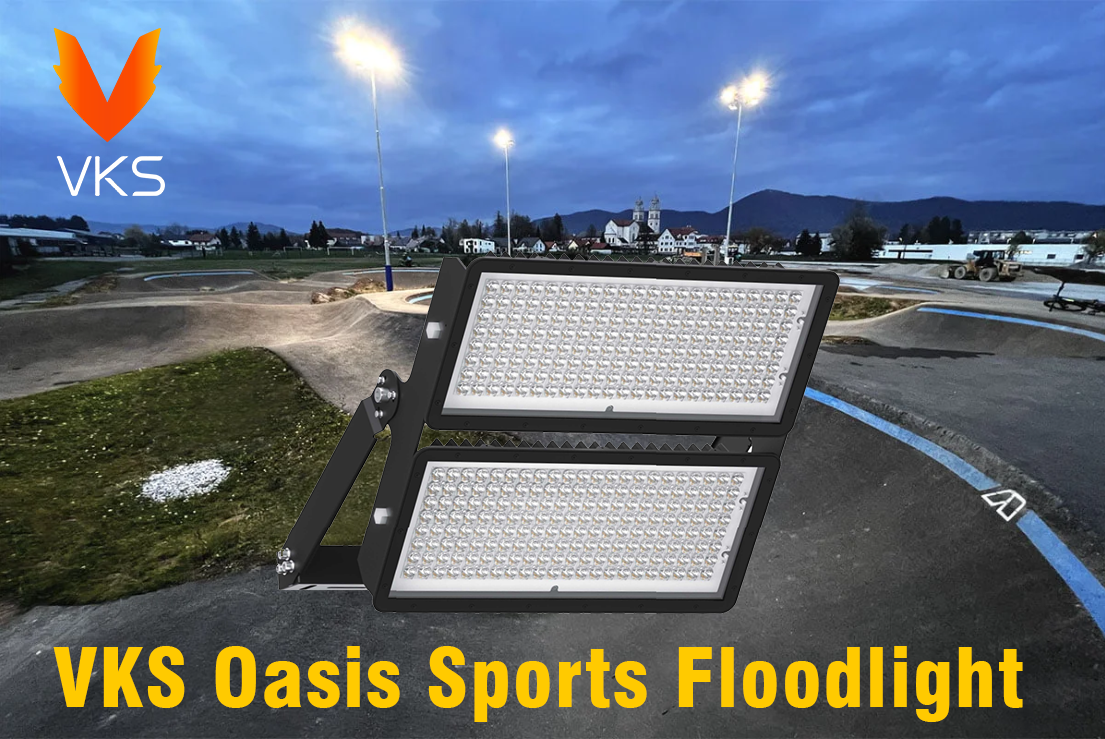BMX tracks are less likely to have professional LED floodlights. They’re more common on football, rugby, and hockey fields. This is slowly changing, as clubs become more aware of their benefits – better conditions for riders, and the opportunity to maximize utilisation.
It can be difficult to plan a floodlighting solution. Unlike in other sports, BMX track lighting is not governed by any standard or regulation. This leaves plenty of room for interpretation. Many clubs are left with more questions than answers when it comes to modern LED lighting systems.
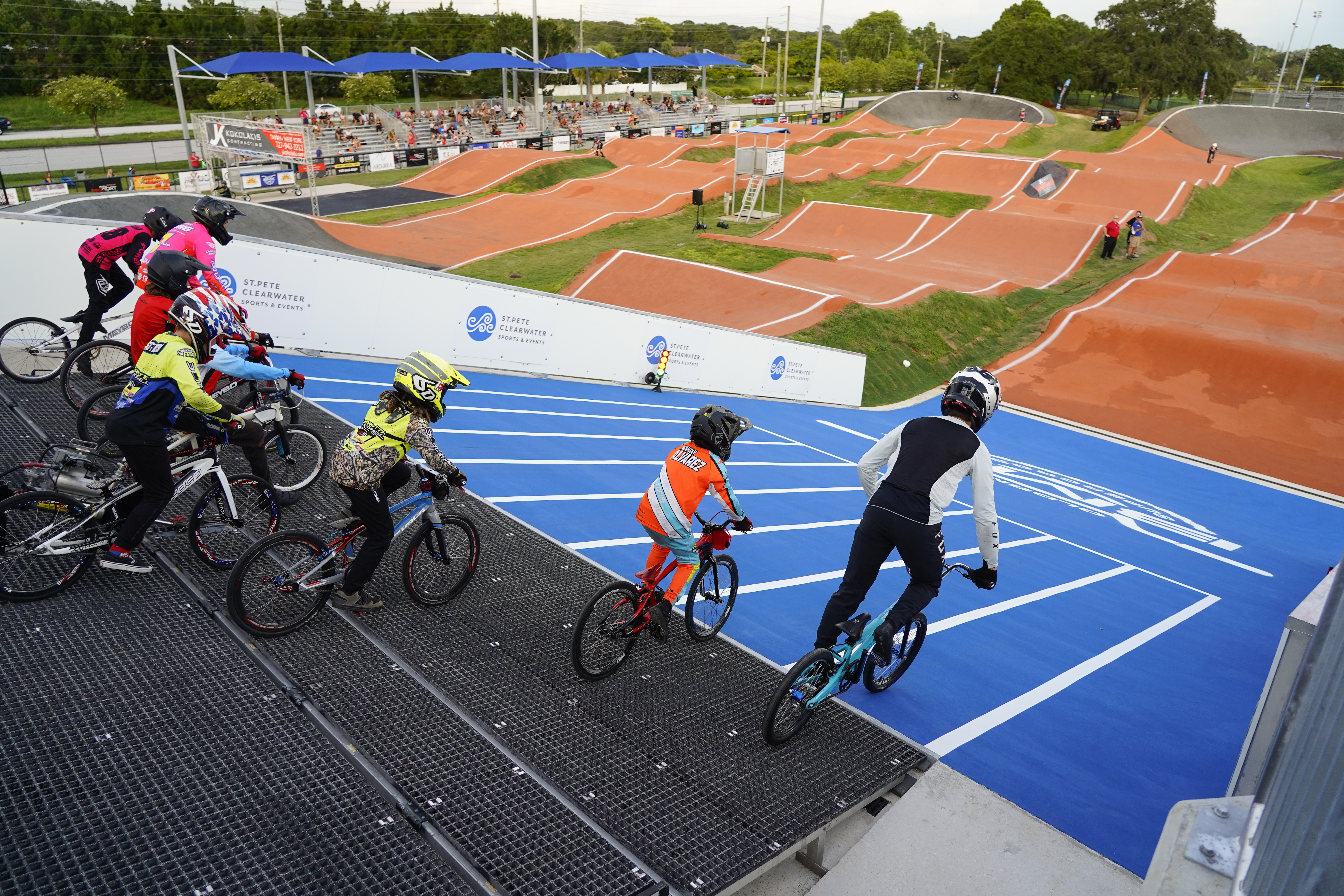
We’ll answer these questions in this guide. Let’s take a look at the most important BMX lighting information, from the floodlighting benefits to what you should know before buying.
Why is it important to have high-quality lighting on a BMX course?
This question may seem obvious, but it is more important than you think. There are four main areas where a professionally designed system can improve your track.
Safety
A well-lit BMX course is a safer BMX course. Lighting of high quality improves visibility for riders, reducing the risk of accidents and collisions.
Performance
Visibility can also be a factor in enhancing performance. The more confident riders feel, the better they will perform.
Experience
It’s not necessary to ride a bicycle to enjoy the benefits of better lighting. Fans and spectators will enjoy a more exciting and engaging trackside experience with better lighting. This can increase attendance and revenue.
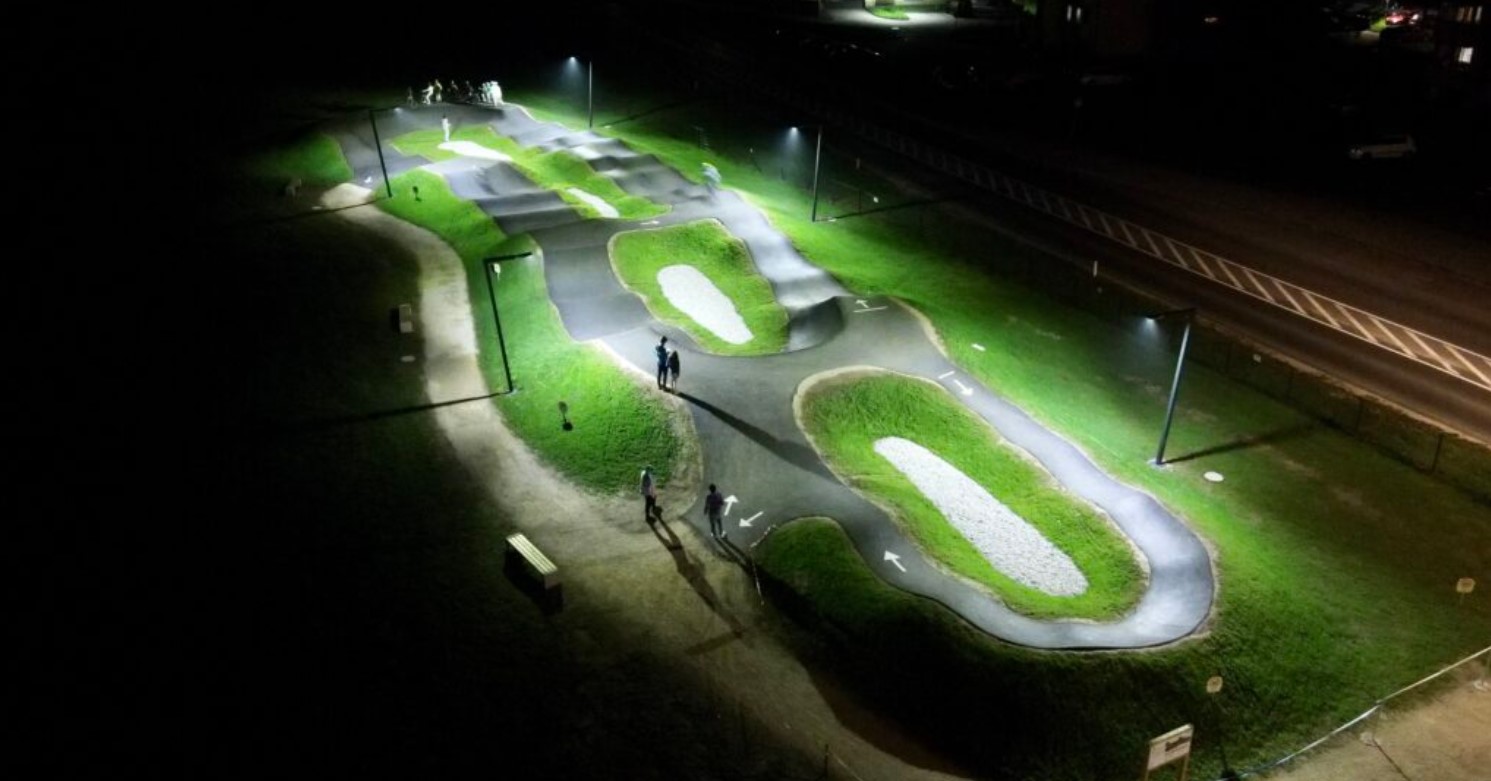
Compliance
Local authorities often have their own specifications for BMX track lighting, even though there is no standard specification. Most of the time, a high-quality system will be enough to meet and even exceed these stipulations.
What should you consider when choosing BMX track lighting?
Lighting systems differ from product to product. The choices you make in specifying track floodlighting will have a significant impact on your overall visibility, energy efficiency, and operating costs. Before making any decisions, you should consider a few important factors to ensure the system is suitable for your requirements.
Visibility and illumination
BMX tracks may share some similarities but their specifics can differ. A lighting system which provides excellent visibility and illumination on one track may not perform as well elsewhere. It is therefore important that a lighting system reflects the specific needs of your site. This includes things such as size, layout and ambient lighting.
Durability and longevity
It’s important to remember that if you have an outdoor BMX course, your floodlights are exposed to all the elements, including wind, heat, rain and snow. The manufacturing quality plays an important role in protecting the floodlights from these conditions. You can tell if a product is durable and well-designed by features such as stainless steel bodies or heatsinks.
Costs in the short and long term
When it comes to lighting systems, cost is a major factor. It’s not always obvious that a lighting system that seems cheaper at first glance could be more costly in the end. LED BMX lighting, for example, has a higher initial cost but the energy and maintenance savings will more than compensate for it over time.
Why should I choose LED lighting?
Most floodlighting systems today generate light either by high-intensity discharge lamps (HID) (older technology) or light-emitting Diodes (LEDs). HID lamps use sodium vapour or other gases to produce light. LEDs, a more recent alternative, use tiny semiconductors to create light. The fundamentally different approaches to both LEDs and HIDs lead to key differences.
LEDs consume far less energy than alternatives like HID. LEDs are not only better for the planet, but they also cost less to operate.
Warm up time
Gas-based floodlights can take up to 30 minutes to reach their full output. This is both expensive and inconvenient. LEDs are instantaneous, reducing waste and allowing for greater control.
Longevity
A gas bulb would need to be replaced three to five times before an LED floodlight reaches the end of its life. This represents an additional cost of maintenance.
Colour rendering
The ability to perceive colours and textures is affected by colour rendering. LEDs are excellent in this area, and enhance the visual experience of riders and spectators.
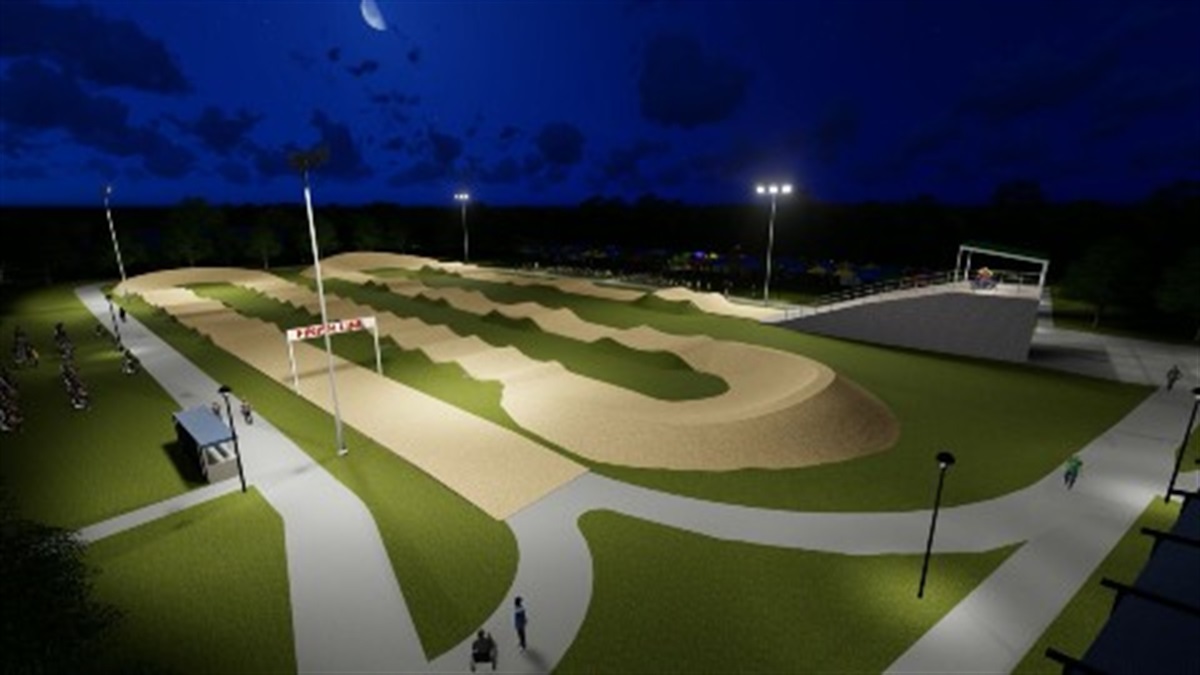
What is the best layout for a BMX lighting system?
For a BMX lighting system to be effective, the design must be based on the particulars of the track where it will be installed. This means that you need to consider the following types of issues:
Track dimensions and layout
Lighting design is all about coverage. Larger tracks require more luminaires and masts to illuminate effectively. Floodlights should be placed safely around turns and ramps.
Angles, spacing and height
Lighting “uniformity”, is a measurement of how evenly light falls over a certain area. When uniformity is low, visibility is patchier and shadows are harsher. The uniformity of lighting is affected by a number of factors, including the distance between luminaires, the height they are mounted at, and even the angle at which they are aimed.
Dimming and controls
LED luminaires can be dimmed to a level below their maximum output. This is especially useful during practice sessions where you can save money and energy by using lights on a lower setting. Lighting controls can also be added to systems to allow quick changes to colour temperature.
It is important to keep in mind that any professional lighting company should be able manage these issues on your behalf. VKS’s complimentary lighting design service, for example, ensures that your lighting system is designed to deliver the best performance possible for your track.
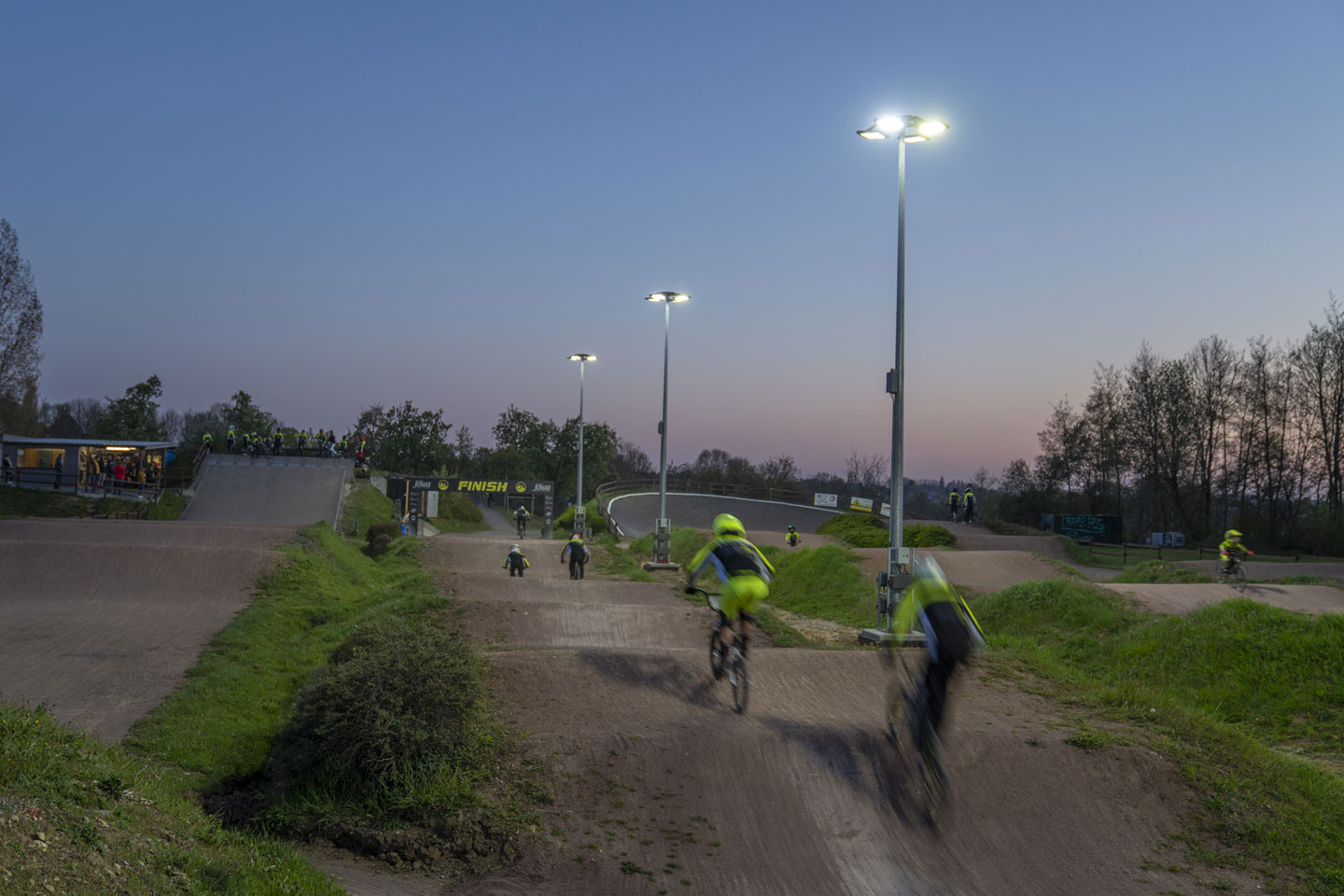
Post time: Dec-15-2023

